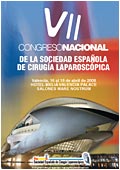 |
RESULTS
The preoperative, postoperative, oncological and functional results of our 184 patients were collected retrospectively and summarized in Table 1.
All patients had clinically organ confined prostate cancers (≤ cT2c). Non-organ confined prostate cancer was found in 37% of the definitive anatomical specimens (pT3a-b).
A positive surgical margin was found in 29 of the 184 patients (15,7%). Only 2.5% of the organ confined prostate cancers (pT2a-c) had positive surgical margins. Thirty-seven percent of the non-organ confined prostate cancers (pT3a-b) had positive surgical margins. There was detectable PSA-level in 11 (38%) of the 29 patients, with positive surgical margins, one month after surgery. These patients received salvage radiotherapy. The other patients (62%), with positive surgical margins with no detectable PSA-levels postoperatively, were placed under active surveillance.
The mean operative time was 171 minutes with a mean estimated blood loss of 200 ml. One patient (0.5%) required blood transfusion due to excessive peroperative blood loss (2500ml). The median catheter duration was 7 days. Three patients (1.6%) temporally required a new catheter. This was due to oedema around the vesico-urethral anastomosis. The catheters were removed after an additional 5 days.
Postoperative neuropraxia of peripheral nerves was seen in three patients (2 cases concerning the plexus brachialis and one case concerning the sciatic nerve). Spontaneous recuperation was seen in all patients after 48 hours.
Partial dehiscence of the vesico-urethral anastomosis was seen in one patient. This was observed after two days of initial catheter removal. The patient experienced slight discomfort in the hypogastric region and was unable to void. Cystoscopy showed a minor dehiscence of the anastomosis. The catheter of this patient was removed after 32 days.
Conversion to an open procedure was necessary in one patient due to a technical defect of the robot (mechanical failure of one of the two optical lenses).
Despite the short median follow-up of only 6 months, 175 (95%) of the patients were continent. In this subpopulation of continent patients, 17 patients (9.7%) used a safety liner for protection against the occasional loss of a few drops of urine. Nine patients (5%) still used more then one pad per day. The mean time to complete continence was 2.1 months. Forty-three percent of these patients were continent within 4 weeks.
Table 2 (A&B) summarizes the postoperative sexual function after a median follow-up of 6 months. Eighty-one percent of the patients, younger than 60 years old and whom received a nerve-sparing procedure, were potent postoperatively (thirty-five percent did use a PDE-5 inhibitor). The potency of the patients, 60 years or older and whom also received a nerve-sparing procedure, was 51% (forty-three percent used a PDE-5 inhibitor). These results, based on Chi-square, were statistically significant.
Forty-seven percent of the patients, whom received a unilateral nerve-sapring procedure, were potent. The percentage of potent patients, whom received a bilateral nerve-sparing procedure, was 70%. These results were also statistically significant.
There seems to be a relationship between the nerve-sparing technique and early recovery of continence. Of the patients (89 pts.) who underwent a bilateral nerve-sparing prostatectomy, 49% was continent within one month, in contrast to the 31% of the non nerve-sparing group (32 pts.). The age of the patients in the bilateral nerve-sparing and non nerve-sparing group were comparable with an average age of 61.2 years and 63.4 years respectively.
Table 1. Preoperative, operative, oncological and postoperative data
| Variables |
|
| |
|
| Mean age (years) |
62 +/- 6. 38 |
| Mean preoperative PSA (Prostaat specifiek antigen in µg/l) |
8,7+/- 4.9 |
| Mean prostate volume (gram) |
49 +/- 21 |
| Median follow-up (months) |
6 (1-25) |
| |
|
| Mean operationtime (minutes) |
171 +/- 49 |
| Mean perioperative bloedloss (ml) |
200 +/- 120 |
| Median catheterduration postop. (days) |
7 (5-32) |
| |
|
| Pathological staging (1997 TNM-classification) |
n = 184 |
| T2a |
26 (14%) |
| T2b |
34 (18,5%) |
| T2c |
57 (31%) |
| T3a |
56 (30%) |
| T3b |
14 (7,5%) |
| |
|
| Gleason score (histopathological specimen) |
n = 184 |
| 4 |
1 (0,5%) |
| 5 |
19 (10%) |
| 6 |
91 (50%) |
| 7 |
53 (29%) |
| 8 |
15 (8%) |
| 9 |
5 (2,5%) |
| 10 |
0 (0%) |
| Positive surgical margins (*) |
|
| Total |
29/ 184 (15,7%) |
| Subtotal |
|
| T2a |
0 (0%) |
| T2b |
2 (5,8%) |
| T2c |
1 (1,7%) |
| T3a |
19 (34%) |
| T3b |
7 (50%) |
| |
|
| Postoperative complications (*) |
n = 184 |
| - Major complications: |
0% |
| - Minor complications: |
|
| ·Neuropraxia |
3 (1,6%) |
| ·Postoperative hematoom |
8 (4,3%) |
| ·Acute urinary retention |
3 (1,6%) |
| ·Postoperative prolonged paralytical ileus |
1 (0,5%) |
| ·Bladderclotting |
3 (1,6%) |
| ·Partial dehiscence of the anastomosis |
1 (0,5%) |
| ·Eventration |
2 (1%) |
| ·Conversion to open procedure |
1 (0,5%) |
Table 2A.Erectile function in preoperative potent patients with nerve sparing
| |
< 60 j |
> 60 j |
| Potent |
43 (81%) |
25 (51%) |
| Erectile dysfunction |
10 (19%) |
24 (49%) |
Chi-square with 95% confidence interval : X2 = 10.39; critical value = 3.22
Table 2B. Erectile function in preoperative potent patients with unilateral versus bilateral nerve sparing
| |
UNS |
BNS |
| Potent |
8 (47%) |
60 (70%) |
| Erectile dysfunction |
9 (53%) |
25 (30%) |
Chi-square with 95% confidence interval : X2 = 3.53; critical value = 1.88
|
|
|





